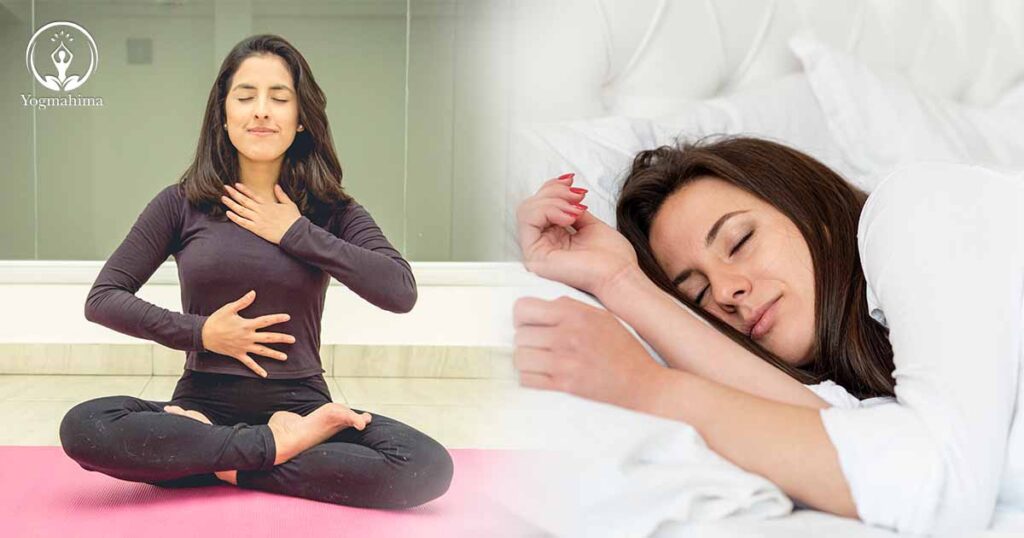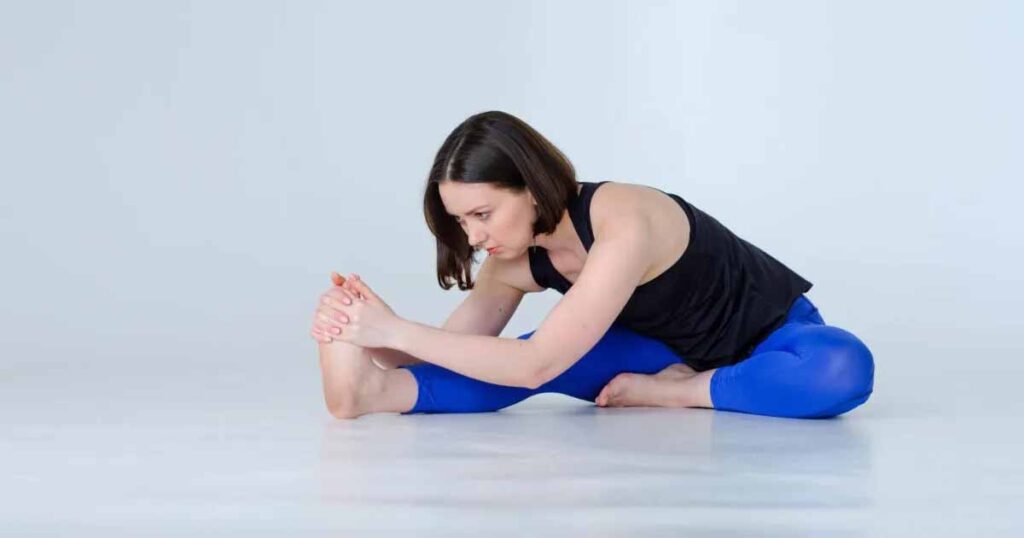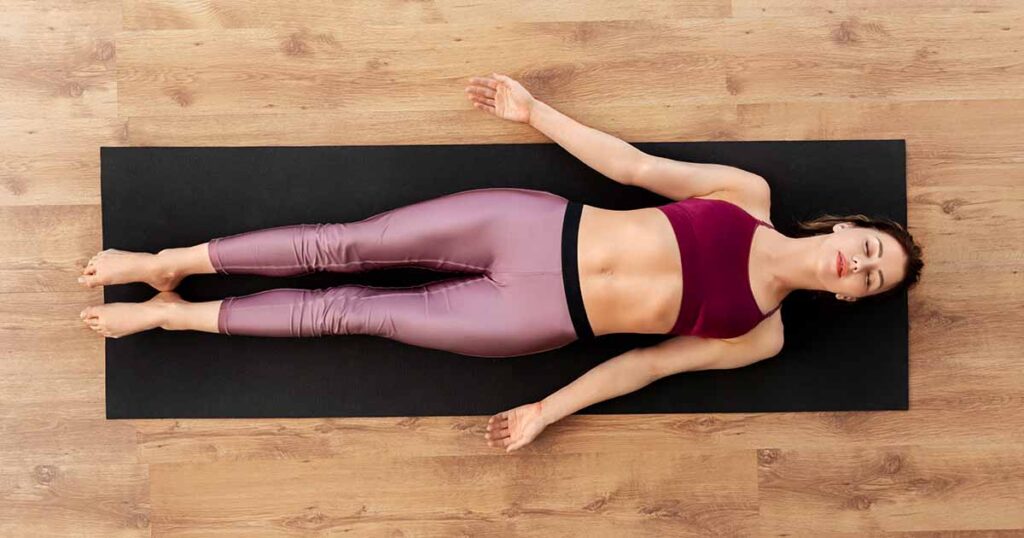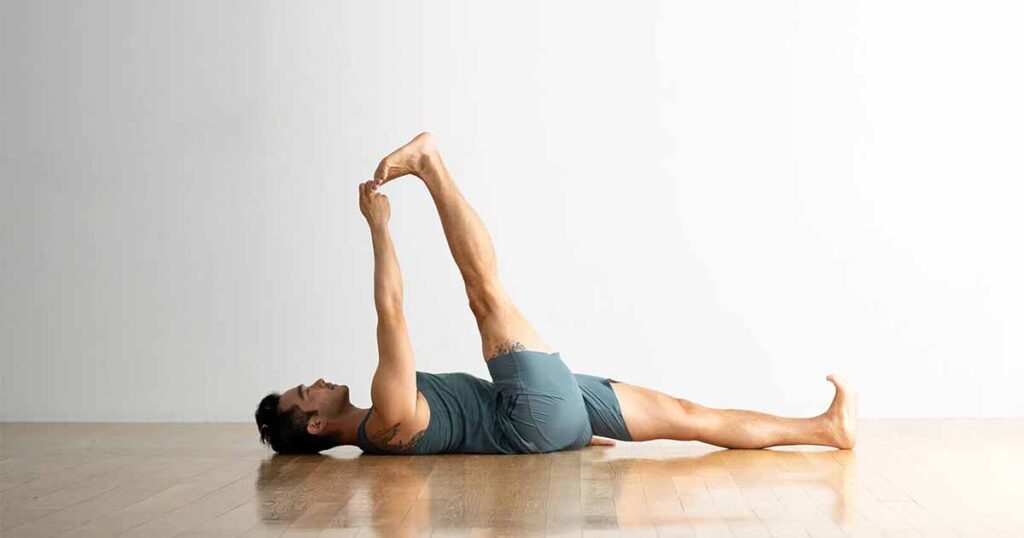
Have you ever wondered why you cannot sleep even after a tiresome day? You toss and turn, being awake the whole night. These sleepless nights will impact your productivity and significantly affect your body.
The good thing is that there are natural ways to improve your sleep! The answer is yoga. Several research studies have shown more than 55% of people do yoga poses for better sleep. Now you must wonder how yoga and sleep are co-related and how I can improve my sleep.
How Can Yoga Help You Sleep
Yoga is a practice that revolves around calmness and stillness in the mind. These overworking mind and stress are one of the prime reasons for sleeplessness. Certain poses in yoga for relaxation and sleep can help you feel better in two ways. First, it relaxes your running mind and calms the nervous system.
Yoga involves elements of mindfulness but also deals with physical practice. These practices help calm the body’s stress by performing specific poses and breathing exercises. Physical training can help calm the nervous system and switch you from sympathetic to parasympathetic, ideal for resting and deep sleep.
Which 11 Types of Yoga Poses for Better Sleep
Relaxing yoga poses for a few minutes daily can help you calm your mind and body. Look at the top 11 yoga poses for better sleep and relaxation.
1.Sukhasana- (Easy Pose)
This is one of the best yoga for sleep. Lets know how it is done. Sit legs crossed on the edge of pillows or other soft cloth. Close your eyes and count your breath in mind.
Rest your hands on your knees and listen to your heartbeat. Inhale as you sit. Exhale as you feel yourself settle down. Breathe for 3 minutes.
2.Uttanasana – (Standing Forward Bend)
Come to the standing forward bend position with your feet wide apart. Then, slightly bend your knees and release your shoulders. Rest your hand alongside your knee.
Exhale and lengthen your back, allowing your head to lower toward the floor. Then, slowly turn your head to one way and the other. Stay there for 1 minute. Inhale, slowly rise and return to a standing position.
3.Janu Sirsasana-(Head to Knee Pose)

Sit down and extend your legs straight in front of you. Bend your right knee and bring the bottom of your foot to the inner left thigh. Inhale and sit with your back straight, then exhale and bend forward at your hips over your straight leg in Janu Sirsasana. Try to stretch as much as possible. You can relax or put your hand on your foot but don’t take a grip. Stay in that position for a minute and then switch sides.
4.Dirga Pranayama (Three-Part Breath)
Sit in a comfortable position, close your eyes, and then breathe naturally. Place your left hand on your abdomen and your right hand on the right edge of your rib cage. Now, place your left hand on your chest and inhale. You can feel your chest rise.
Release your arms and focus your mind on your breath for 5–10 minutes, inhaling and exhaling completely.
5.Paschimottanasana -(Seated Forward Bend)
Sit and extend your legs and bring your feet together. Then, slowly exhale and sit tall. Exhale while you lean forward with a flat back. Stay in this position for a while. You can rest your forehead on stacked pillows if you want a little comfort. Stay in this position and breathe for at least a minute.
6.Supta Baddha Konasana (Reclining Bound Angle Pose)
Sit with your knees bent and your feet on a flat surface. Lean back first on your forearms and then down. Bring your feet together and let your knees fall apart. If you want, place a pillow beneath each knee to help your lower body relax.
Stay in this position for at least 2 minutes. Breathe. Bring your knees together and slowly roll onto one side.
7.Savasana (Corpse Pose)

Lie down on your back and rest your arms at your sides. Use pillows beneath your knees to release tension in your lower back. Put your body weight into the mat, and focus on breathing. Take a long exhalation and stay here for at least 4 minutes.
This is among the most calming yoga poses, as you don’t have to put any strain on your body. The focus is mainly on breathing.
8.Setu Bandha Sarvanganasa (Bridge Pose)
Lie down on your back with your knees bent, placing your feet in line with your shoulder. Inhale slowly and lift your hip. Put your weight onto the support in the bridge pose. Put your arms alongside your body or take them in a cactus shape. Stay in that position for at least 1 minute. Slowly lower yourself and allow your lower back to rest on the mat. Stay there for a few seconds.
9.Viparita Karani (Legs Up The Wall)
Lie on your back with your legs against a wall so your body makes an “L” shape. Put your body weight onto the floor. Inhale. Relax your arms at your sides. Stay there for 3 minutes.
10.Balasana (Child Pose)
Sit on your knees and come onto your hands, inch your knees wider than your hips, and touch your big behind your back. Put your hips toward your heels and lower your chest as you rest your forehead on the floor, bed, or pillows in a child’s pose. Extend your arms alongside your shoulder stretch. Take a long, slow breath out here.
Breathe into your belly, exhale, and feel the tension released from your body. Settle into a slow and stay there for at least 1 minute.
11.Supta Padangusthasana (Reclining Hand-to-Big Toe Pose)

Lie down and fold your knees into your chest. Then, bend your left knee and place your left foot on the floor. Inhale and straighten your right leg toward the top. Grab the back of your thigh and hold it with both hands in the Supta Padangusthana pose. Push your foot against your thigh against your hands until you feel a stretch but not a strain. Remain here for about 1 minute. Now, switch to the next side.
Conclusion
Do these yoga poses for better sleep and reduced stress. Also, studies have shown that people with insomnia who added yoga for insomnia to their lifestyle fell asleep faster and had better sleep quality. If you need the help of an expert in practicing yoga, connect with Yogmahima. It guides you through mindful movements, deep breathing techniques, and spiritual exploration, empowering you to reach new heights of wellness and self-discovery.
Elevate your yoga experience with Yogmahima today!
Frequently Asked Questions (FAQs)
Can I do yoga myself or with the assistance of a professional?
No, it is always recommended to practice yoga under the supervision and guidance of an expert. Doing improper yoga poses can lead to some serious injury.
What are the advantages of doing yoga?
Yoga is a holistic approach to health. Its most significant advantage for the body is that it calms your nerves and relaxes your mind and soul.
Are there any side effects of doing yoga?
No, all its effects are positive. If done under the supervision of an expert, you will not have any side effects.
What is the best time to practice yoga?
The best time for yoga is early morning when you are on an empty stomach and have minimal distractions. However, adding an evening yoga routine to your lifestyle improves your well-being.
How is Yogmahima different from others?
Yogmahima emphasizes a holistic approach to yoga, bringing a difference in mind, soul, and body.
You May Also Like:
Top 10 Hatha Yoga Poses for Beginners: A Complete Guide
7 Essential Yoga Poses to Avoid During Pregnancy
The Benefits of Daily Yoga Practice: A Comprehensive Guide
How To Build A Yoga Routine For Beginners



No Comments yet!